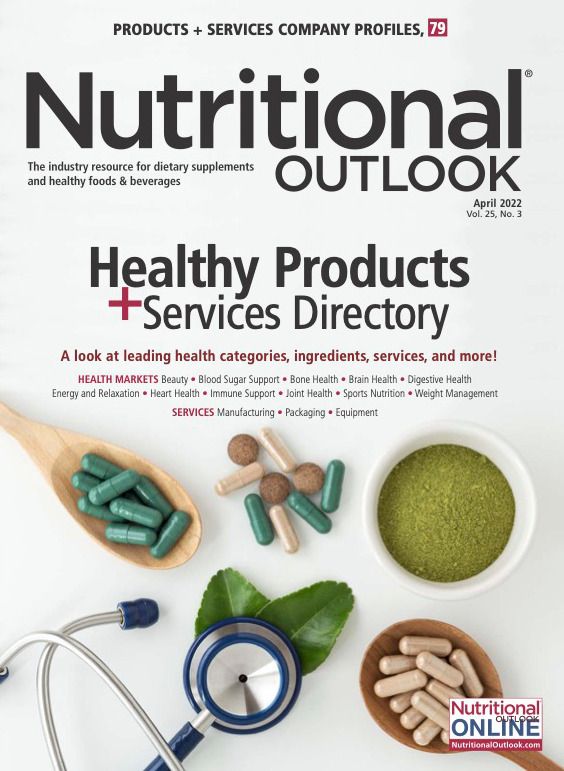Are mainstream wellness consumers ready for cannabinoids? With the right delivery format, they might be.
Discreet delivery forms may be the key to capturing hearts and minds of the “canna curious” crowd.
At last count, there were 2,000+ CBD brands on the market, ranging from your garden-variety (and sometimes questionable-quality) “gas-station” products available nearly everywhere to high-cost “premium” products sold through boutique shops and specialty websites. In addition, new regulated markets for adult-use cannabis continue to come online across the United States, and sales of cannabis products continue to rack up record numbers, state after state.
There can be little doubt that cannabidiol (CBD), tetrahydrocannabinol (THC), terpenes, and a host of other cannabinoids are being adopted by consumers across the country, from those utilizing cannabis strictly as medicine to recreational consumers pursuing wellness goals like relaxation and anxiety relief. Always searching for the next great product, wellness consumers have historically been among the first to adopt new ingredients once they become available. That appears to be the case with cannabinoids as new consumers flock to CBD and become increasingly interested in other cannabinoids.
However, a lack of familiarity with certain delivery forms, as well as a wish to avoid products requiring inhalation, is keeping some wellness consumers away. When CBD hit stores and the first regulated cannabis markets were created, the earliest adopters consisted of medical patients seeking an alternative to ineffective or risky treatments, and existing, longtime cannabis enthusiasts. There was limited appeal for the mainstream wellness consumer, and there often was little information on cannabis efficacy to be found for those who were intrigued.
Derek Odette

The importance of feeling familiar with a product cannot be overstated, according to Bridget Williams, MD, an Ohio physician with a medical cannabis license. “In order for a patient to take a treatment seriously, they need to feel a level of comfort and credibility with how it is administered. I think that even the gummy form factor can be a challenge for some people. They have a tough time viewing it as ‘medicine.’ For many consumers, what is really needed is something that feels like any other treatment they might find in their medicine cabinet.”
Today, an explosion of new cannabinoid-based products is reaching the public and encouraging longtime resisters to give cannabis further consideration. The past 12 months have seen a rush from manufacturers to incorporate “minor cannabinoids” into new products. These are compounds found to a lesser degree than CBD or THC within the hemp and marijuana plants that have demonstrated positive effects but that are typically not psychoactive. Examples include cannabinol (CBN), which is often utilized as a sleep aid, and tetrahydrocannabivarin (THCV), which many believe is an effective appetite suppressant.
Often, what makes these new products interesting to mainstream consumers is that they don’t feel like “cannabis” products. They do not need to be smoked or vaped or require any inhalation, and they aren’t oils that need to be placed under a tongue or mixed with a beverage. Most popular is the “gummy” form factor that consumers have long been familiar with, but many still typically associate this with candy.
“Consumers who are using products for a specific wellness purpose expect these products to ‘look and act the part,’” says Andrew Wolf, CEO at hemp CPG company AllyMack. “They want a form factor they are comfortable using that’s familiar, and they want it to feel like a regular part of their daily health regimen. These consumers are looking for traditional formats like mints, chewable tablets, and capsules.”
They also want precision dosing and consistency of results, which have often been elusive for cannabinoids. While an increasing number of wellness product manufacturers are toying with incorporating CBD and other cannabinoids into products, their efforts have been stymied by the very nature of the ingredients. When cannabinoids and terpenes are extracted from the hemp or marijuana plant, the result is an oil in the same way perfume and cooking oils are extracted from organic materials. Unfortunately, oil-based cannabinoids don’t play well with many nutraceutical ingredients. It can be extremely difficult to balance ratios between different ingredients, which ultimately leads to inconsistent products.
Today, the race is on to develop consistent, versatile ingredients that can be used in a variety of products, offering broad appeal to consumers. Technology and innovation are beginning to eliminate the barrier of oil-based cannabinoid ingredients through the development of fully miscible, pharmaceutical-grade cannabinoid ingredients. This advancement promises to open wellness products to an entirely new class of ingredients right at the moment cannabinoids are becoming popular with consumers. In addition, the growing acceptance of cannabinoids is accelerating research efforts to confirm and expand upon existing knowledge about these compounds.
When wellness consumers recognize they can gain the benefits of cannabinoids and terpenes without inhalation or ingesting candies or unpleasant oils, the floodgates will open for new product innovations. Propelled by this expanding consumer interest, an era of consistent, reliable integration of cannabinoids into traditional nutraceutical and pharmaceutical ingredients may soon come to fruition.
Derek Odette is CEO of Tennessee-based Volunteer Botanicals, developer of precise cannabinoid formulations that provide manufacturers with consistent, versatile hemp-based ingredients for use in a wide variety of products meeting specific demands of product creators inside and outside the hemp industry.

Prinova acquires Aplinova to further increase its footprint in Latin America
April 7th 2025Prinova has recently announced the acquisition of Brazilian ingredients distributor Aplinova, which is a provider of specialty ingredients for a range of market segments that include food, beverage, supplements, and personal care.

.png&w=3840&q=75)

.png&w=3840&q=75)



.png&w=3840&q=75)



.png&w=3840&q=75)

























